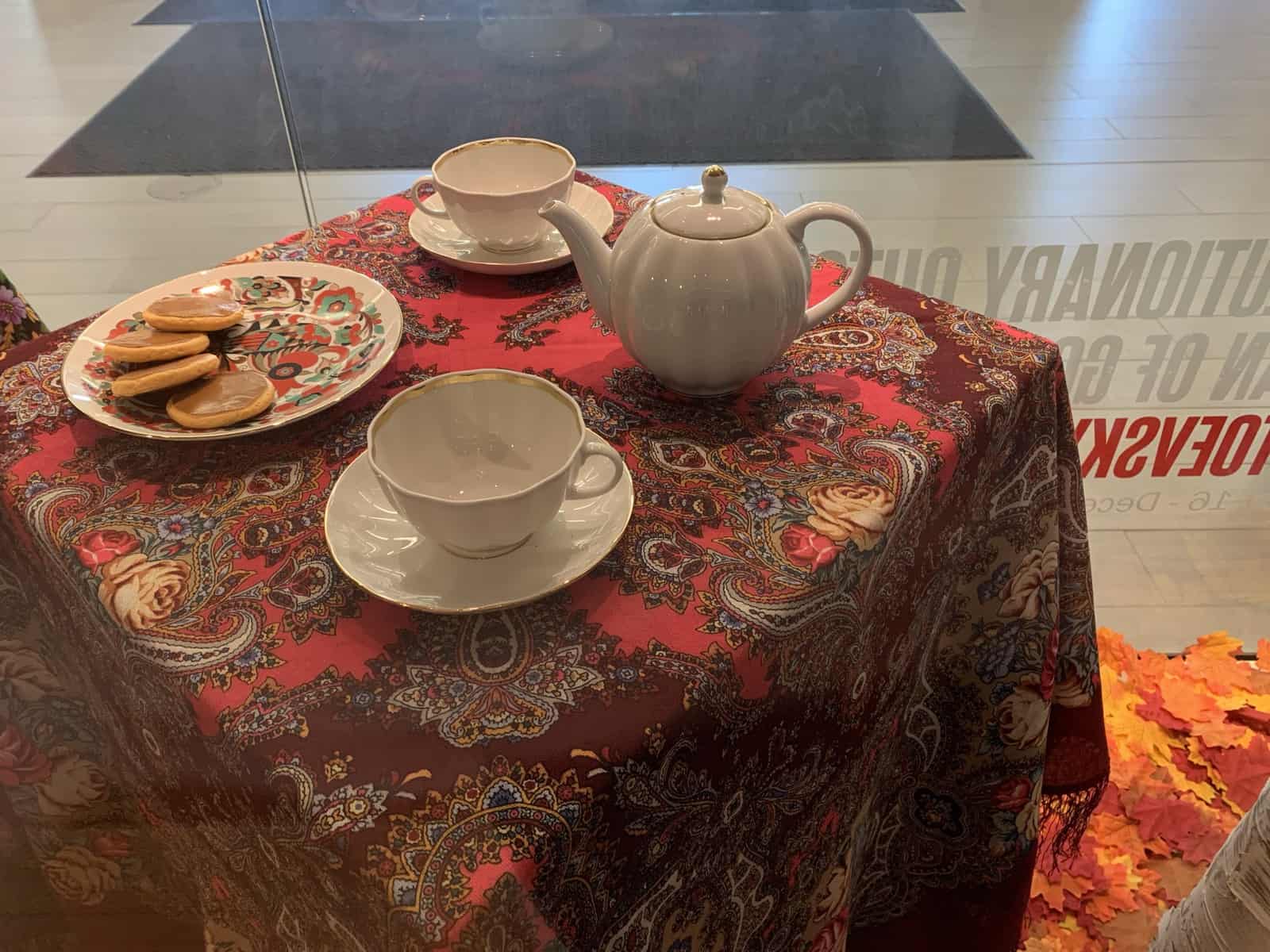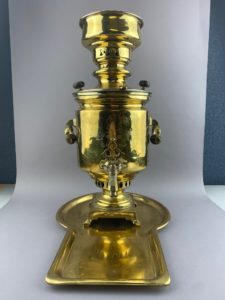
Fine porcelain, tea rituals, Russian scarves, and birch forests are symbolic of Russian culture and history. This exhibition combines them all in the Main Library Gallery’s front display case to bring a taste of Russian tradition to Iowa.
Pictured:
Teapot, cups, saucers, Rooster plate
The Imperial Porcelain Factory (Императорский Фарфоровый Завод) was established in 1744 by Dmitry Vinogradov and supported by Russian monarchs starting with Empress Elizabeth. It produces hand-painted porcelain in Saint Petersburg, Russia. In the 20th century it was known as Lomonosov Porcelain Factory named after the 18th century Russian scientist Mikhail Lomonosov (1711-1765) who founded the Moscow State University in 1755.
Pancakes
Blini is one of the most popular Russian dishes made of wheat or buckwheat flour and served with sour cream, jam, butter, caviar, fish, meat, or other toppings. Blini can be served for breakfast, as an appetizer, or as a snack.
Russian scarves
The Pavlovo Posad shawls are traditional Russian scarves made of wool and silk. The popularity of these shawls increased in the early 19th century. The base colors are typically red, black, or white with large, colorful, and elaborate floral patterns. Pavlovo Posad shawls are worn with traditional Russian folk costumes or as fashion accessories and are still popular both in Russia and abroad.
Samovar (at right)
A samovar is a metal pot used for heating water for tea. Traditional samovars have a metal pipe in the middle where hot coals or charcoal are placed to heat the water. A porcelain teapot with tea concentrate is kept warm by being placed on top of the samovar. The tea concentrate is poured into the cup, then hot water is added according to the tea drinker’s preference for strong or weak tea. Samovars can be crafted from copper, iron, bronze, silver or gold and modern variants are electrically heated. Samovars were popular with all Russians, from peasants to aristocrats. Family gatherings around a samovar are a cherished Russian tradition. The one used in this exhibition is from the 19th century and was manufactured in Tula.
The city of Tula has been known for its metalworkers and arms manufacturers. Tula became the center of Russian samovar production in the 18th century. The Russian saying “to travel to Tula with one’s own samovar” is equivalent to the English “to carry coal to Newcastle.”
Text by Dr. Anna Barker for From Revolutionary Outcast to a Man of God: Dostoevsky at 200, University of Iowa Libraries Main Library Gallery.

